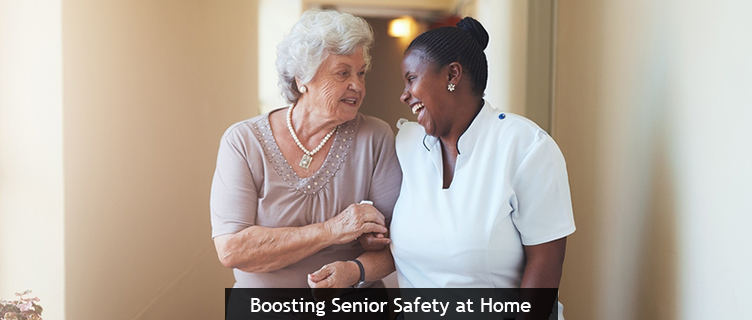Boosting Senior Safety at Home

Aging in place is a common practice as many seniors prefer to stay in the comforts of their own home for as long as possible. Provided they are mentally and physically capable of living mostly independently, this can be a more cost-efficient option to assisted living or a nursing home. They can even get in-home care – a few hours a day or week to assist with activities that may be more challenging. This way, they can remain at home with the level of support that fits their needs.
Conduct a Home Safety Assessment
As your loved one gets older and their abilities change, it can be a good idea to get a home safety assessment done. There are checklists you can review yourself, or you can have a professional come out and do the assessment. These assessments look for potential safety concerns like poor lighting, lack of handrails or grab bars, tripping hazards, navigation challenges, and other issues. You want your aging parent to be able to move around, use facilities, and reach items with as little difficulty as possible.
Check for risk factors that can increase chances of falling as well, such as:
- Carpets, rugs, or tiles that are not securely fastened.
- Cords or clutter on the floor that they may trip over.
- Poor balance or coordination (be alert for medications that may cause impairments).
- Vision problems.
Managing Navigation
Encourage your senior to wear slip-resistant footwear, whether that is shoes with a sturdy sole or snug-fitting slippers. Avoid anything that flops around, does not stay securely on their foot, or has no traction. Ensure that furniture is positioned so that they can safely maneuver their walker around the area or will not catch their cane on anything. Even if they’re only going a short distance, they should still use their walker or other device for support.
Coordinating Safe Transfers
Transferring from sitting to standing, wheelchair to bed, or other positional changes can be challenging for seniors. Grab bars in the bathroom and handrails on stairs provide a sturdy surface for seniors to hold on to as they transfer. In-home care providers should also be trained on safe transfers so they can assist aging adults with getting up and down. A caregiver can help with balance, keep them from falling, and safely get their body into the right positions for maneuvering around. This can be beneficial in the morning or evening as they are getting in and out of bed.
Determining Driving Ability
Seniors are often resistant to give up the car keys because they feel they’ll be losing their independence. Look for new dents or scratches on the car that may indicate problems. Take a ride with them to see how well they are able to control the car, follow the rules of the road, and get from place to place without becoming lost or disoriented. If you do not feel that they are safe behind the wheel, you may need to have a serious discussion about them no longer driving.
Your senior’s safety and well-being should be top priorities. An in-home caregiver can help them continue to age in place more safely by assisting with tasks around the home, safe transfers, meal prep, light housekeeping, companionship, and much more. If your senior is not ready for a nursing home or assisted living quite yet but could benefit from some help at home, contact Always Best Care today at 855.470.2273 to schedule a free consultation.










